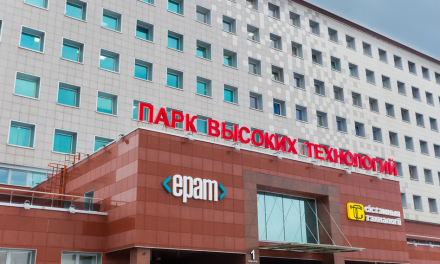Built by Linux Foundation with IBM’s involvement in 2015, Hyperledger is the backbone of many blockchain enterprise systems. It was originally created with a goal to make collaboration between multiple businesses more efficient.
Article Contents
Hyperledger offers the “umbrella” strategy, incubating and promoting a vast number of business blockchain technologies, frameworks, libraries, interfaces, and applications.
According to the official statement on the platform’s website,
“Hyperledger is an open source collaborative effort created to advance cross-industry blockchain technologies. It is a global collaboration, including leaders in finance, banking, Internet of Things, supply chains, manufacturing, and Technology.”
Some of the top practical advantages of choosing Hyperledger as your enterprise blockchain solution include permissioned membership (Hyperledger is a permissioned network, where all participants have known identities), performance, scalability and levels of trust, as well as protection of digital keys and sensitive data (this feature is especially valued by financial institutions for protection of customer information and other sensitive documentation).
Due to the high adaptability of the Hyperledger blockchain enterprise system, there’s a number of real use cases currently presented – below are just a few examples, listed in no particular order.
Blockchain-based Supply Platform for Pharmaceuticals
In April 2017, IBM announced several new blockchain enterprise systems to be built on Hyperledger Fabric.
The company partnered up with the Chinese conglomerate Sichuan Heijia to build up a blockchain-based supply platform for pharmaceuticals. Small and middle-sized pharmaceutical retailers in China often find it extremely difficult to secure financing due to the underdeveloped credit system and a lack of established credit evaluation, as well as risk control. After pharmaceuticals are delivered, retailers often have to wait from 60 to 90 days before getting paid.
With the help of the Hyperledger blockchain curated by IBM, the drugs will be tracked all the way through the supply chain, encrypting trading records. Such transparency will establish the authenticity of the transaction, lowering the credit risk of pharmacies and allowing the payment period to be shortened, with the funds possibly transferred even on the next day after trading.
Blockchain-based Platform for Trade Financing
In the same month, April 2017, IBM partnered up with Japan’s Mizuho Financial Group and Mizuho Bank for creating a blockchain-based platform for trade financing.
According to the Japanese bank, blockchain technology helped them shorten the deal processing time from a couple of days to just two hours, also allowing to save on labor costs while increasing transparency through document digitization.
Additionally, Mizuho Financial Group is working with IBM to ultimately conduct all their trade transactions on Hyperledger Fabric. According to IBM’s official press release, such system will enable all parties to view the latest shipment data, which will drastically cut the trade transaction and processing costs.
Blockchain-based Education and Training
In another project announced by IBM in April 2017, they’ve partnered up with the National University of Singapore to develop a module on financial technology in order to improve students’ education in this area, equipping them with the fundamentals of blockchain and distributed ledger technologies.
Implemented in early 2018, the module is focused on educating students on the technology behind distributed ledgers, as well as its diverse use cases, from banking to digital currencies to supply chain management.
NUS faculty members co-developed the curriculum of the new module in cooperation with IBM researchers in order to encourage students and faculty members to contribute to developing the technology further. The module is co-taught by NUS academic staff who use Hyperledger Fabric to deliver the course content.
Blockchain for Smart Energy Management
In May 2017, IBM presented one more major project to be built on the Hyperledger blockchain platform.
In cooperation with TenneT, Sonnen and Vandebron, IBM has been developing a distributed database for managing the electricity grid in the Netherlands and Germany. The project will have a huge effect on the future use of energy sources worldwide, as it’s intended to identify areas that lack electricity or experience outage and fill that gap with the power from other electric sources, including electric cars and batteries, delivering electricity to the areas that lack it through a permissioned blockchain network that uses Hyperledger Fabric.
During this process, energy supplied by electric cars and household batteries is applied to the electrical grid. The technology is currently being tested in Germany and the Netherlands, and has the full potential to be implemented worldwide, due to the increasing volatility of the energy supply.
Streamlined Supply Chains
Global commerce has grown rapidly, with a 246.15% increase in ecommerce sales worldwide, and is expected to grow further, reaching $4.5 trillion in 2021. With manufacturing activity taking place across the globe, real-time tracking of merchandise becomes vitally important.
To satisfy the demand, in December 2017 the major multinational chain retailer Walmart has partnered up with IBM to create a Hyperledger Fabric enterprise blockchain system that tracks food staples from supplier to shelf. Walmart’s Food Safety Solution uses IBM Food Trust technology, which allows a complete and full collaboration of all food stakeholders.
According to Walmart’s VP of Food Safety Frank Yiannas, it would not be possible without blockchain, since currently the supply chain is being recorded by suppliers and stores either on paper, or on the systems that “don’t speak to each other.” With Walmart being the world’s largest company by revenue, it’s only logical they were the pioneers to adopt the Hyperledger blockchain solution.
Plus, more major retailers have recently expressed their wish to collaborate, including Dole, Driscoll’s, Golden State Foods, Kroger, McCormick and Company, McLane Company, Nestlé, Tyson Foods, and Unilever. However, the supply chain system built on Hyperledger is not exclusive to the food industry, and the next companies to adopt it are pharmacies all over the globe, since they’re required by law to maintain the chain of custody over each pill.
Enterprise Blockchain: Final Thoughts
Hyperledger goes far beyond than simply blockchain tech, covering both business and industrial worlds. It’s intended for high-scaling enterprise applications, delivering efficient solutions for improving and optimizing existing processes, as well as developing new ones. It’s proven to be a secure blockchain enterprise network with enormous potential, where every business can benefit from.
Did you like the article? Give your rating






Blockchain Insights
Join our mailing list to receive OpenLedger Insights publications weekly.
Thanks! Please check your inbox to verify your email address.
By clicking “Subscribe”, you’re accepting to receive newsletter emails from OpenLedger Insights every week. You can easily update your email or unsubscribe from our mailing list at any time. You can find more details in our Privacy Policy.